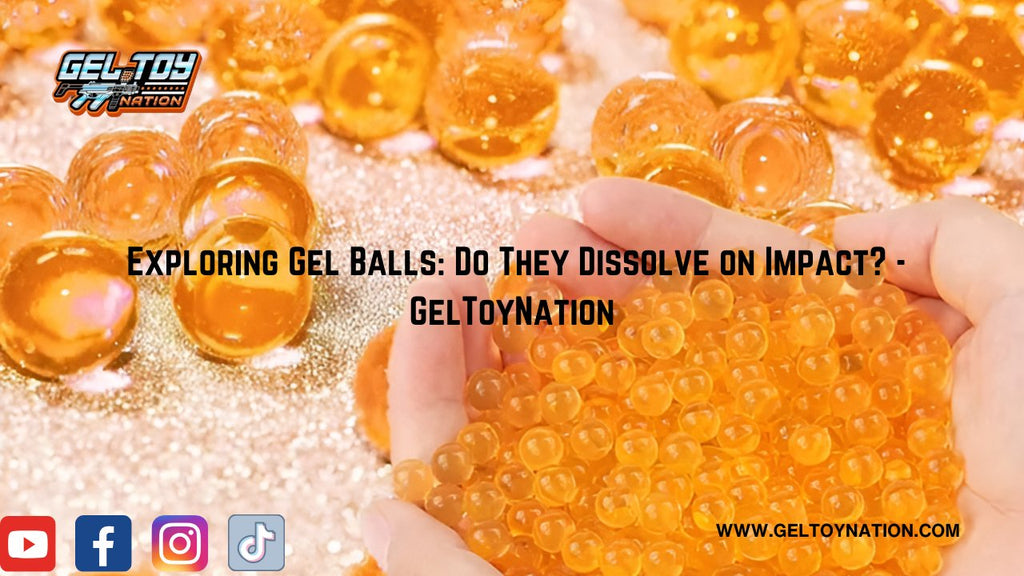Exploring Gel Balls: Do They Dissolve on Impact? - GelToyNation
Introduction: Are you curious about the properties of gel balls and what happens to them upon impact? GelToyNation is here to unravel the science behind gel balls and whether they dissolve when they hit their target. Join us as we delve into this fascinating topic and uncover the truth about gel balls.
Understanding Gel Balls Gel balls, also known as water beads or gel blaster balls, are small, spherical projectiles made from superabsorbent polymer materials. Initially dry and hard, these tiny beads expand dramatically when soaked in water, becoming soft, squishy, and highly absorbent. Gel balls are commonly used as ammunition in gel blasters, toy guns that shoot these water-filled projectiles for recreational purposes.
What Happens When Gel Balls Impact a Surface? When fired from a gel blaster, gel balls travel at high speeds until they collide with a surface or target. Upon impact, several factors come into play:
-
Bursting: Gel balls are designed to burst upon impact, releasing the water they contain. This burst creates a satisfying splatter effect and adds to the realism of the shooting experience.
-
Absorption: While gel balls do burst upon impact, they do not completely dissolve. Instead, the outer shell breaks, allowing the water inside to disperse. The remaining gel material may disintegrate over time, but it does not dissolve like a water-soluble substance.
-
Residue: After bursting, gel balls leave behind a small amount of residue, primarily consisting of the gel material. This residue is typically easy to clean and does not cause staining or damage to surfaces.
Factors Affecting Gel Ball Impact Several factors can influence how gel balls behave upon impact:
-
Velocity: The speed at which a gel ball travels affects its impact force and the resulting splatter pattern. Higher velocities may cause more significant bursts upon impact.
-
Distance: The distance traveled by a gel ball before impact can affect its velocity and kinetic energy. Gel balls fired at close range may produce more dramatic splatter effects compared to those fired from a distance.
-
Target Surface: Different surfaces may react differently to gel ball impacts. Soft, porous surfaces may absorb the water more readily, while hard, smooth surfaces may cause gel balls to bounce or shatter.
Conclusion: In conclusion, gel balls do not dissolve upon impact but rather burst, releasing the water they contain while leaving behind a small amount of gel residue. Understanding how gel balls behave upon impact can enhance your gel blaster experience and help you make informed decisions when using them for recreational purposes. With www.geltoynation.com as your trusted source for gel blaster products and information, you can enjoy safe and exciting gel ball shooting adventures.


Comments (0)